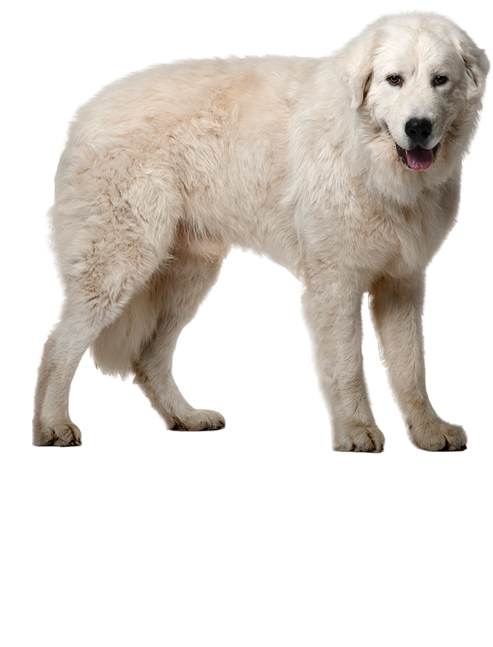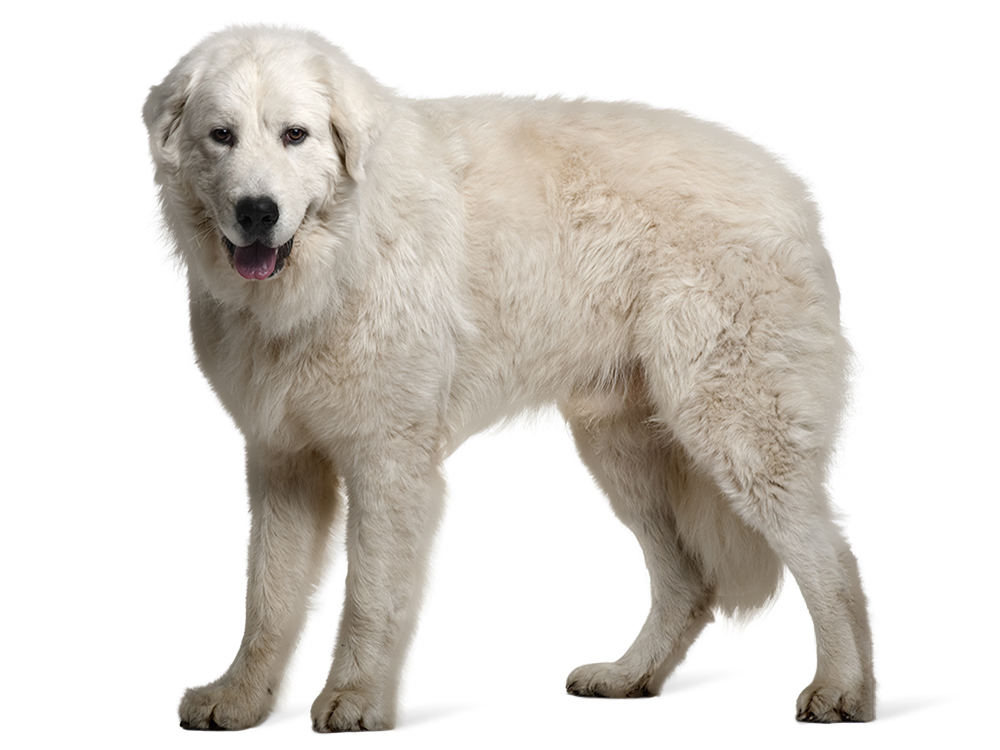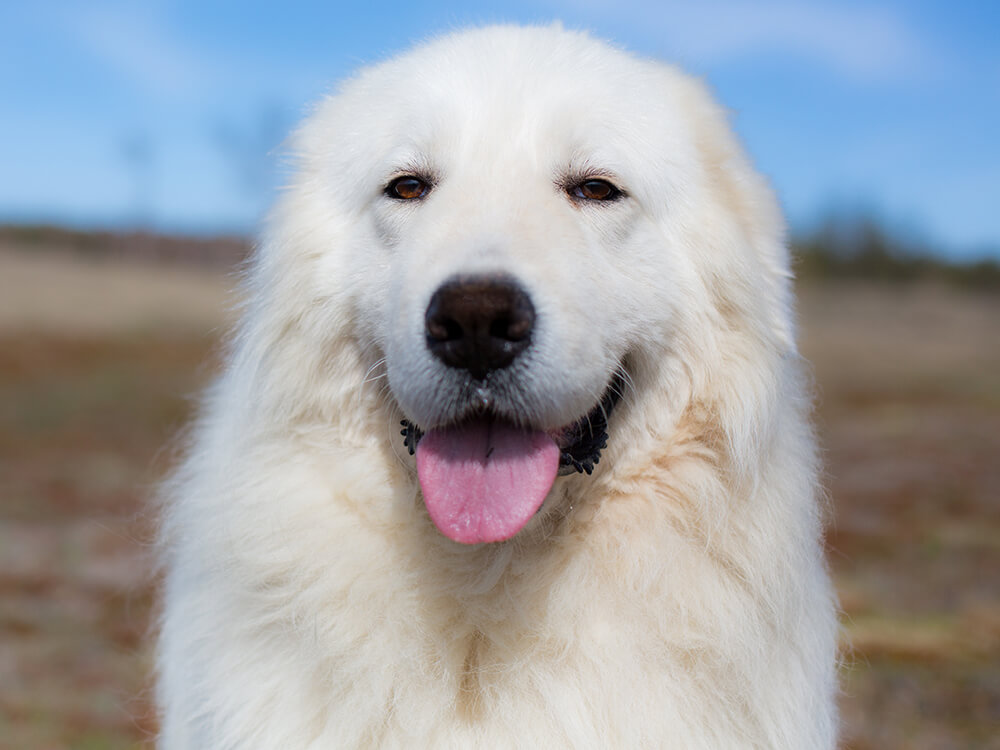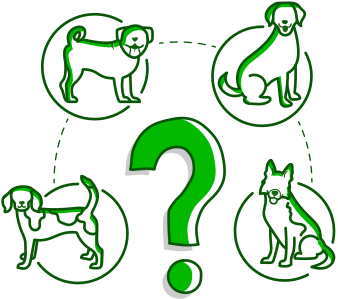
Maremma Sheepdog Breed Pictures
Vital Breed Stats
| Height: | 26 - 29 cm M | 24 - 27 cm F |
| Weight: | 77 - 99 kg M | 66 - 88 kg F |
| Breed Group: | Hound Dog Group |
| Life Expectancy: | 11 - 14 years |
| KC Registered: | No |
Breed Characteristics
| Size: |  |
| Grooming: |  |
| Exercise Level: |  |
| Trainability: |  |
| Barking Level: |  |
| Good with Children: |  |
| Good with other pets: |  |
| Affectionate: |  |
| Protective: |  |
| Cost to Keep: |  |
Give a thumbs up if you love the Maremma Sheepdog

0
More About the Breed
History
The Maremma Sheepdog is an ancient breed native to the mountainous region of Tuscany, Italy. The dog has long existed since the historical time of the Romans. Because of this, his true origins are difficult to trace and thus remain unknown.
Around 100 B.C., huge white sheepdogs were first mentioned by a Roman scholar named Marcus Terentius Varro. Later on, he continued to highlight these canines in works of literature, paintings, and sculptures. These depictions that can be traced back to as early as the fourteenth century closely match the features of the modern Maremma Sheepdog.
It is believed that the breed’s ancestry is connected to the Pyrenean mountain dog due to their likeness in features and working roles. Other breeds such as the Kuvasz and Komondor of Hungary, the Cuvac of Slovakia, and the Karabash and Akbash sheepdogs of Turkey are also progenitors of the Maremma sheepdog.
The Maremma Sheepdogs commonly work in packs composed of about three to four canines. During their puppyhood, they are set free to cohabitate with the sheep. Through this, they can perceive themselves as the flock’s protector. The Maremma sheepdogs are brave and can stand their ground when facing a potential threat. There are historic illustrations of them wearing roccales. It is a dog collar adorned with spikes to protect their neck from any fatal wounds by big predators.
In 1898, it was the first time that the Maremma sheepdog was registered. However, the breed was named Maremmano. According to other accounts, there were two separate breeds namely the Abruzzese and the Maremmano. Each of these dogs came from different regions. The Abruzzese hailed from the mountains, whilst the Maremmano came from the plains. The only distinguishing trait between the two is their physique. The former sports a longer body and the latter possesses a somewhat shorter coat.
In 1924, the first standard for the breed was published. Then, around the late 1950s, the Maremmano and the Abruzzese were officially considered as one breed. Today, there are only a few Maremma Sheepdogs registered with the Kennel Club. However, they are quite a popular guard dog breed in the United States, Canada, and Australia as they proved to be excellent protectors of different animals.
Appearance
A massive dog with a powerful physique, the Maremma Sheepdog is a magnificent-looking canine. He has a large bear-like head attached to a firm, thick neck. His somewhat small, V-shaped ears are slightly folded and set high and forward on his head. He has a square-shaped muzzle and a black nose, which often turn slightly pinkish brown as he becomes a senior dog. His oval-shaped eyes may come in colours of brown or ochre. He has a keen look, which connotes the dog's alertness and intelligence.
The Maremma Sheepdog’s jaw is thick and strong with a set of very strong teeth. He is deep-chested and his back is straight and strong. It may push up a little bit from the withers to rump. His bushy tail is hung low. When at rest, it dangles heavily around the hocks. He has firm, muscled legs with big, rounded paws. His gait is a lumbering yet unrestricted walk or trot.
The Maremma sheepdog possesses a unique double coat that is long, coarse, and wavy. The fur around his neck and hindquarters are usually very thick. His undercoat is thick that tends to be more inconspicuous during wintertime. The Maremma sheepdog's coat colours come in solid white. However, a bit of yellowing can be considered as stated on the breed standard.
Grooming
Since the breed has a long and thick double coat, grooming will require extra work. Moreover, the breed is an active shedder that moults heavily during certain seasons. Be sure to brush and de-shed his coat at least three to four times a week. This will effectively get rid of dirt and mats on his fur. Bathe him only when he gets really dirty and smelly as overwashing can dry his skin and coat. Occasionally trimming his hair is also advised to keep him at a more comfortable temperature.
Monitor his nail growth and trim them before they grow too long to avoid cracking or splitting. Prevent the risk of ear infections by regularly checking and cleaning his ears. If possible, brush his teeth daily to avoid periodontal diseases.
Temperament
A large dog with a big love for his family, the Maremma Sheepdog is immensely fond of his human companions. Although he is not a clingy dog, he relishes receiving their love and attention. He fits well with families that have children or other pets provided that he receives early socialisation. It is needed to curb his high prey drive and herding and nipping instinct.
Because the Maremma Sheepdog is very devoted to his family, he is protective of them. When facing strangers, he tends to be aloof and indifferent. His alertness and protective nature make him a great watchdog. Moreover, the breed is known to be excellent at guarding without being a frequent barker. Socialisation and training are important to ensure that he has a clear distinction between what is considered a threat and what is not.
Intelligence
Nutrition
An appropriate and healthy meal consists of a premium quality dog food and a bowl of water. A Maremma Sheepdog’s food must contain the necessary nutrients and minerals to ensure that his body develops well. It includes fats and carbs, which gives him energy, proteins, which facilitates muscle development, and vitamins and minerals, which strengthens his immune system.
It is best if you opt for high-quality age-specific dog food. This is to ensure that he gets the right amount of these essential nutrients for his age. If your dog is a picky eater, you can add broth, cooked eggs, vegetables, and fruits in his meal to entice him. However, keep in mind that human food should only be 10 per cent of his deal meals.
Feeding
A Maremma Sheepdog puppy between the ages of three and six months needs two to three cups of food divided into three small meals per day. Once he reaches six months to one year, feed him at least two cups of food split into two meals daily.
An adult Maremma Sheepdog weighing 30 kgs should consume about one to two cups of food a day. The same goes for a 35-kg adult Maremma Sheepdog. For those that weigh 40 kg, they need at least two to three cups of food daily. 45-kg adult Maremma Sheepdog also requires the same amount of food every day. Make sure to break the servings into two meals daily to prevent them from overeating, which can cause obesity. Be sure to provide them with fresh water especially during hot weather.
Health
- Achondroplasia
- Anaesthetic sensitivity
- Ivermectin toxicity
- Hip dysplasia
Exercise
The Maremma Sheepdog has high levels of energy and stamina. He needs plenty of exercise and mental stimulation to be healthy. Walk him for about forty-five minutes to an hour a day. Add a few fun games and activities to expend his energy.
Note that the breed is accustomed to open and spacious places, thus he needs a big yard. He may not be suitable for apartment living. However, if he gets enough exercise in a day, he will be calm and content indoors.
Cost of Ownership
Purchasing a well-bred Maremma Sheepdog will cost you over £500. Dog food expenses may range between £40 and £60 a month. The total initial cost of buying basic items, including bedding and lead, is approximately £200–£400. Vet check-up fees on average costs £30 per session. Initial vaccinations have a price tag of £100 and each shot of yearly boosters amount to £50. Pet insurance for a healthy puppy may require you to pay around £20–£30 a month on average.
Is a Maremma Sheepdog Right for You?
- The Maremma Sheepdog is affectionate and very loyal to his family.
- He is protective by nature, thus he requires early socialisation and training.
- Patience, firmness, consistency, and gentleness are needed when training.
- Frequent grooming is needed as he is an active and seasonal shedder.
- A sufficient amount of exercise and stimulation is needed to keep him happy and healthy.
















